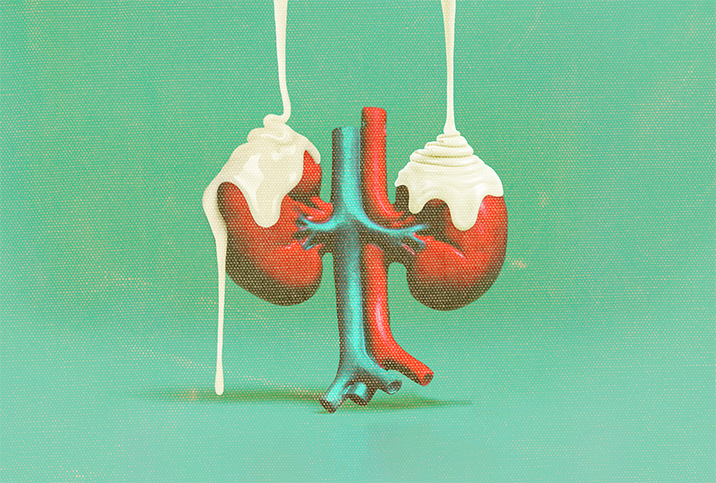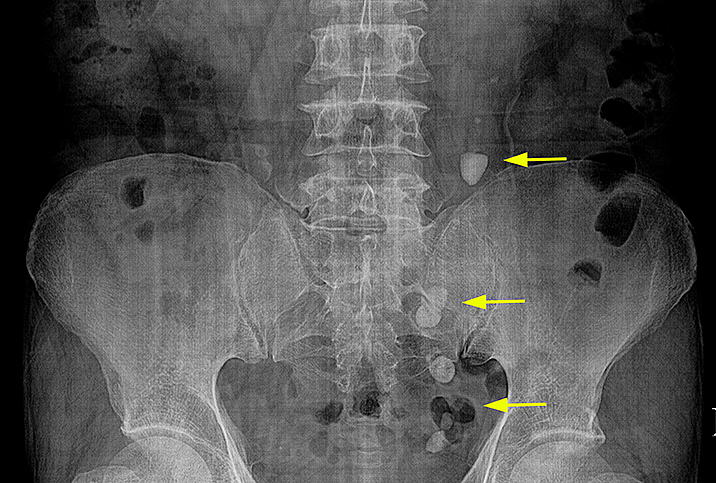'Servant' Star Rupert Grint Got Kidney Stones on Set

While filming the fourth and final season of "Servant," the Apple TV+ show produced by M. Night Shyamalan, Rupert Grint noticed a weird pain in the side of his stomach.
As Julian Pearce, Dorothy Turner's unhinged, recovering-alcoholic brother, Grint plays a pivotal role in the show. "Servant" returned to screens Jan. 13, and new episodes are released every Friday.
Grint recalled how he handled the abdominal pain in a recent interview with GQ, a monthly men's magazine. At first, the actor ignored the pain, but when it grew too intense, he took a break from filming to visit the A&E (or "Accident and Emergency", which is what British people call the emergency room). There, doctors discovered the culprit: kidney stones, which are hard mineral deposits that form in the kidneys.
The doctors got to work. First, they broke the stones into tiny pieces by using high-pressure waves in a noninvasive procedure known as extracorporeal shock wave lithotripsy (ESWL). To remove the final fragments, the medical team inserted a thin, wire ureteroscope through Grint's urethra and into the bladder.
If it sounds horrible, it was. Grint called it "one of the worst things I've ever experienced."
"I was weeing blood for five days," Grint said in the GQ article published Jan. 30. "I live in fear now that it will happen again."
What caused the kidney stones?
Grint, who rose to fame playing Ron Weasley in the "Harry Potter" movies, attributed his kidney stones to dehydration. "Servant" co-star Nell Tiger Free, who plays the mysterious young nanny, Leanne Grayson, had other theories.
"Rupert had a storyline where his character drank these leafy kale juices," Free told GQ. "What I love about him is if it says in the script, 'He drinks a pint' of something, Rupert will drink the full thing in every single take. Apparently, the surplus of those greens in your body can cause kidney stones."
A nephrologist weighs in
Was Grint's fellow actor right? According to Jingyin Yan, M.D., Ph.D., an associate professor of nephrology at Baylor College of Medicine in Houston, Grint was likely closest to the truth.
"Inadequate fluid intake is probably the most common cause of kidney stones," Yan said.
As for Free's kale juice theory, Yan said it's unlikely leafy greens caused crystals of minerals and salt to solidify in Grint's kidneys.
"Some vegetables may be oxalate-rich and if the patient has high oxalate content in the urine, doctors may advise low oxalate intake," she said. "But overall, people don't have to worry too much about green vegetables."
Aside from dehydration, the most common causes of kidney stones are diets high in sodium or animal protein, Yan explained.
"An increased amount of urine calcium, oxalate, phosphorus, uric acid and a decreased amount of urine citrate can all contribute to stone formation," she added. "Some medical conditions or genetic diseases can also cause these changes and, eventually, increase stone risk."
Treatment options for kidney stones
Not everyone with a kidney stone endures as unpleasant an ordeal as poor "Ron Weasley," according to Yan.
"It depends on the size, amount and location of the stone," she said. "If the stone is very small, it has a high chance to pass spontaneously with increased hydration. The patient can take [paracetamol] or ibuprofen for pain management. The doctor may prescribe some medications to facilitate the passage of the stone and ask the patient to strain the urine to catch it."
When the stone gets too big or the location is high, that's when surgical intervention is needed, Yan noted.
If you experience persistent symptoms that don't improve—including sharp pain in the back or lower abdomen, difficulty or pain while urinating or blood in the urine—seek medical attention, she advised.


















